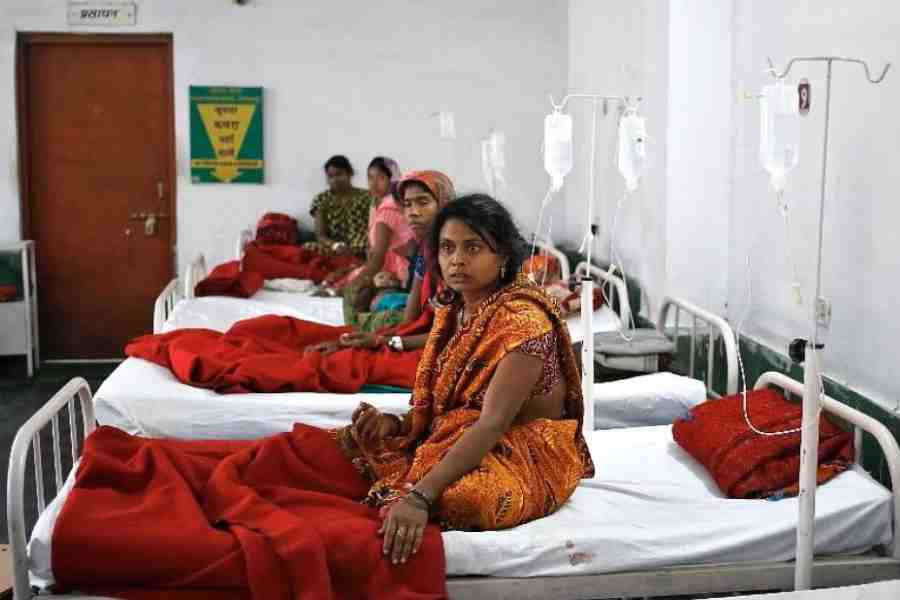Many, including the World Bank and other such international institutions, profess greater concern about poverty-removal than about reducing inequality in society. A society’s priority, they argue, must be to lift people above the poverty line, instead of worrying about growing income inequality. I have no quarrel with prioritising poverty-removal; what I dispute, however, is the separation of poverty from inequality, the belief that the former can be separately tackled no matter what is happening to income inequality. In fact, growing income inequality itself has a poverty-augmenting effect, as a very simple example will make clear.
Consider a society in which the poverty line income (let us not worry about how it is arrived at except that it is not linked to average income) is Rs 2,500 per capita per month, with those having incomes less than this benchmark being considered poor; and let us suppose that 50% of the total population is below this limit while the rest are above. Now, suppose there is a 5% increase in the incomes of all those below the poverty line and a 20% increase in the incomes of all those above it. Clearly in this case, income inequality goes up, since the relatively more affluent become even better off compared to the less affluent. At the same time, however, poverty goes down, since a 5% increase in incomes would lift many who were below the poverty line, but close to it, above the poverty line. Institutions like the World Bank would applaud this reduction in poverty.
The problem is that this is not the complete story. Let us assume that in the initial situation, every family sent its children to government schools. But because the incomes of the better-off segment have gone up by 20%, they would now like to send their children to more expensive private schools; the number of such private schools will expand and, in the process, draw good teachers away from government schools through the offer of higher salaries.
The less affluent — that is those who had been below the poverty line initially — will have two choices: either keep sending their children to government schools, now of a lower quality; or send them to the more expensive private schools but find the resources for doing so (in excess of the 5% increase in money income accruing to them) by cutting down on other, especially food, expenditure. Either of the choices, in itself, constitutes a worsening of the condition of the family, which has to be counted against the 5% increase in money income in order to decide whether it has been genuinely lifted above the poverty line; and it may well turn out that those below the poverty line, instead of becoming better off as initially appears, have actually become worse off. And even some who were above the poverty line initially may have got pushed down because of the greater expenses involved in children’s education.
Now, the World Bank and most researchers on poverty do not reckon with this worsening of the conditions of the less affluent families owing to the disappearance of government services of such quality as was available initially. On the contrary, they take the act of sending a child to a private school as an indicator of growing affluence even among the poor.
Exactly the same happens with regard to healthcare. A rise in income inequality creates the demand among the affluent for more expensive private healthcare facilities since they do not want to stand in long queues. This leads to an expansion in private facilities, which draw good doctors away from government hospitals. As the government facilities dwindle, even the less affluent are constrained to use private ones by cutting down on their food expenditure (or else suffer a loss in the quality of healthcare that they access). This loss on their part, whether through reduced food intake or through reduced access to proper healthcare, has also got to be counted in deciding whether any of them has ceased to be poor; but it typically is not, since the implications of the growing privatisation of healthcare for fixing the level of the poverty line are scarcely taken into account (this line being adjusted only if the prices of a bundle of goods available in the initial situation — in this case, government-provided healthcare — change at all, which they evidently do not in our example).
There are two distinct issues here: one, more substantive, concerns the effect of growing income inequality on poverty (whether or not this effect is correctly measured); the second concerns measurement, the fact that this poverty-augmenting effect of growing income inequality typically goes unnoticed because of which the illusion is created that poverty and inequality are, indeed, separate issues and that the former can be addressed even without addressing the latter. This illusion has long been held with regard to poverty in India that is supposed to have declined greatly, which is far from the truth.
Growing income inequality, of course, is not the only reason for the privatisation of essential services which may be quite independently resorted to within a neo-liberal dispensation. But growing income inequality is a contributory factor, and its effect can be seen in a number of spheres, even leaving aside essential services. For instance, when malls replace neighbourhood shops, the consequences are similar.
Poverty and inequality, it follows, must be jointly addressed through government provision inter alia of free essential services like education and healthcare to all, which is financed through taxing the rich.
Prabhat Patnaik is Professor Emeritus, Centre for Economic Studies, Jawaharlal Nehru University, New Delhi










